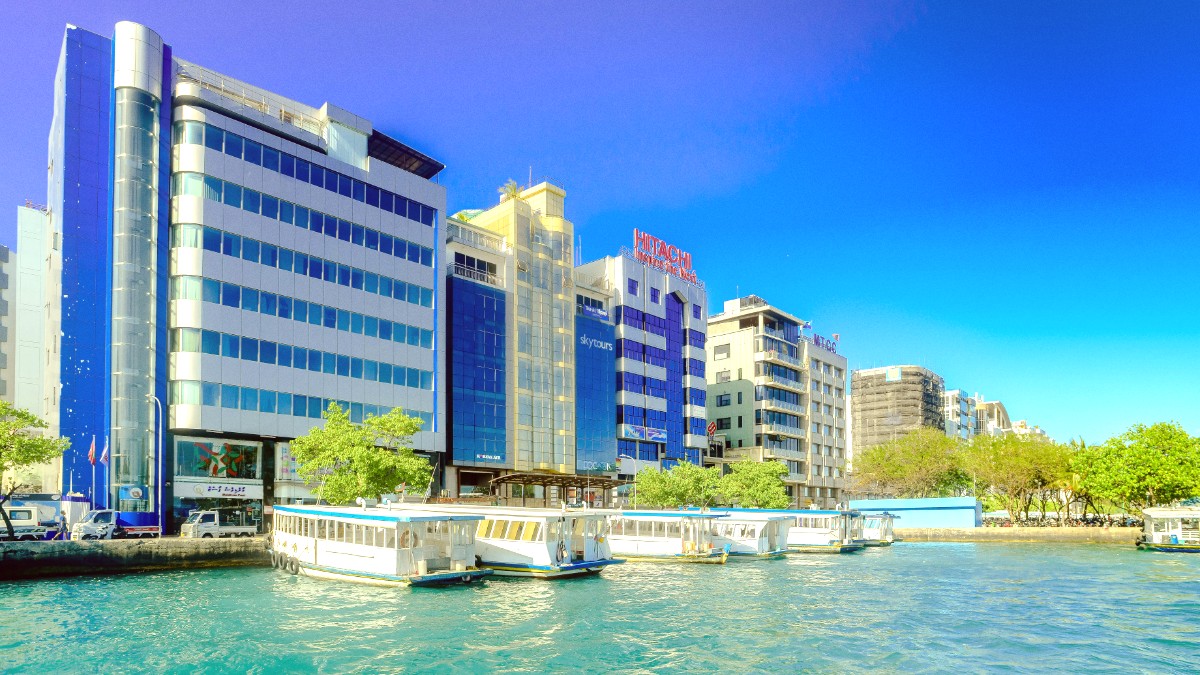
Maldives
Malé presents a small collection of historical and cultural sites. Many are within walking distance of each other in the city center.
These sites give a look at the nation's Islamic identity, traditional craftsmanship, and significant historical events.
These sites collectively paint a picture of Malé's spiritual, political, and cultural evolution.
Historical and architectural significance. View its design from the exterior, near Sultan Park.
Shrine dedicated to the scholar who brought Islam to Maldives. A site of religious and historical importance. Located near the Old Friday Mosque.
A memorial marking the Maldivian victory over a mercenary attack in 1988. A reminder of national resilience, found in a central area.
A UNESCO World Heritage site, showing ancient coral stone craftsmanship and intricate details.
The largest mosque and a major architectural landmark, central to the Islamic Centre.
While Malé is urban, its connection to the ocean remains undeniable.
A popular man-made beach on Malé's eastern side. It functions as a recreational space, a substitute for natural beaches on the densely populated island. It presents views of the ocean and passing boats.
The bustling harbor and surrounding ocean views give a natural backdrop to the city's urban landscape. Observe traditional Maldivian boats (dhonis) and fishing vessels.
Witness the daily life of the Maldivian fishing and transport industry along the waterfronts, a core element of the nation's identity.
Beyond Malé, the main natural attractions are the surrounding coral reefs and diverse marine life. These truly represent the Maldives' natural beauty.
Access to these natural wonders is through boat trips for snorkeling and diving, easily arranged from Malé.
Malé acts as a hub for embarking on adventures to discover the rich underwater ecosystem.
The Grand Friday Mosque and the waterfronts present captivating photo opportunities of urban life blended with ocean views.
Sultan Park gives a quiet escape amidst the city bustle, a peaceful spot for relaxation.
Malé's compact nature means most attractions are walkable, allowing for easy exploration of its distinct areas.
Plan your walks to make the most of your visit.
Beyond the main tourist circuit, discover local favorites and authentic experiences that truly show Maldivian daily life.
These spots give unique insights and memorable interactions, far from typical resort experiences.
It presents a fascinating glimpse into local life and the importance of fishing to the Maldivian economy. The air fills with the smell of fresh fish, and the energy is palpable.
Adjacent to the Fish Market, this market presents a colorful array of fresh fruits, vegetables, local snacks, and some handicrafts. You can find exotic fruits and local produce.
These small, unassuming local cafes are found throughout Malé. They serve authentic Maldivian meals and the popular "Hedhikaa" (short eats) with tea.
These "hidden gems" allow you to move beyond tourist brochures and truly feel the pulse of Malé, connecting with its people and traditions.
Beyond the main historical sites and markets, Malé presents more specific attractions that give unique insights into its identity and daily functions.
A space for contemporary Maldivian art, showing local talent and cultural narratives through visual art. Check for current exhibitions.
Observe the constant movement of speedboats and traditional dhonis, the lifeblood of inter-island transport and commerce.
Scattered across the city, these shops present a selection of handicrafts, local products, and items for visitors to take home.
Visit the reclaimed island of Hulhumalé for a different urban vibe, modern architecture, and a public beach. Easily reached by ferry or taxi.
Discover Hulhumalé toursTake a short public ferry ride to Villingili, a quieter local island that presents a peaceful escape and a local beach.
Arrange day trips to nearby local islands like Maafushi or Gulhi for guesthouse stays, water activities, and local island life. Use GetYourGuide for booking.
Find local island tripsExperience luxury resorts with a day pass. Many nearby resorts offer this, including access to their facilities, pools, and dining.
Browse IHG Hotels near MaléMalé is a hub for organizing dive and snorkel excursions to the surrounding vibrant coral reefs. Book through local dive centers or via GetYourGuide.
Book dive tripsMalé's public areas, though busy, also give quiet corners for observation and contemplation.
The mosques and historical buildings in Malé are not just landmarks; they are works of art, showing centuries of Maldivian craftsmanship.
Dress modestly when visiting religious sites, covering shoulders and knees. Women should also cover their heads.
Be mindful of prayer times when planning mosque visits. Early mornings or late afternoons are often the best times for photos and exploring markets.
Malé is a city rich in cultural heritage, reflecting centuries of Islamic influence and an unique island history. Engaging with these aspects gives a richer travel experience.
Islam shapes the daily life and architecture of Malé. The city's mosques are not just places of worship but also historical treasures.
Maldivian artisans have developed unique skills over centuries, apparent in the intricate details of historical sites and traditional crafts.
The markets are not just places to shop; they are centers of social and economic life.
These spaces present a genuine feel for the city's pulse.
The historical sites themselves are living monuments to the nation's past.
Beyond formal attractions, everyday interactions with locals are important for truly experiencing Maldivian culture.
These interactions give authentic insights into local traditions and values.
Modest dress is appropriate in public areas in Malé, especially for women. Shoulders and knees covered for all; women cover heads in mosques.
Displays of affection are not suitable in public. Be aware of local customs regarding personal space and interaction.
Always ask permission before photographing individuals. Be discreet in religious settings.